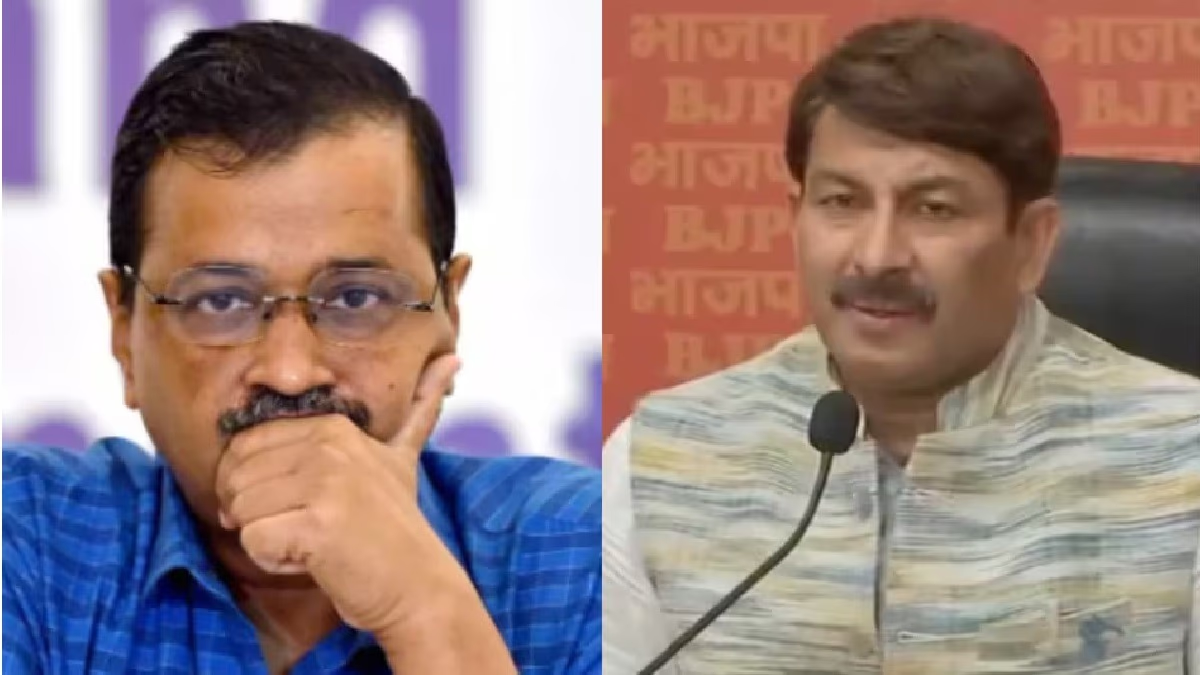The Aam Aadmi Party's decisive victories in the last two Delhi Legislative Assembly elections clearly indicate their appeal across various demographics. This year, however, there's an evident scramble for Purvanchali voters by both Aam Aadmi Party and BJP. The heightened focus of Aam Aadmi Party on this community suggests their concern over potentially losing this vote bank. Unlike their efforts for Purvanchali voters, similar fervor isn't evident for other voter groups. So, does this mean the Purvanchali voters are the game-changers in the Delhi Assembly elections this time? Or is there an attempt to frame the elections as Purvanchali versus others? The question arises, who stands to gain from such a divide?
1 - How did Kejriwal's strategy backfire in just three weeks?
On December 20, 2024, former Delhi Chief Minister Arvind Kejriwal claimed that BJP's national president JP Nadda had compared Purvanchali people in Delhi to Bangladeshis. The BJP allegedly filled forms to remove these names from voter lists, which Kejriwal termed a conspiracy against the Purvanchali community. In response, Aam Aadmi Party announced a campaign for the respect of Purvanchalis, led by Sanjay Singh. Kejriwal questioned how people who have been settled for 30-40 years in Delhi, coming from UP and Bihar, could be labeled 'Rohingyas' and 'Bangladeshi'.
Exactly three weeks later, Kejriwal, after meeting the Chief Election Commissioner, stated that from December 15 to January 8, there had been applications for 13,000 new voters. In a constituency like New Delhi with a lakh votes, the presence of 13,000 new people seemed suspicious. It became apparent that people from UP, Bihar, and nearby states were being brought in to create bogus votes. This raised concerns over electoral manipulation, suggesting if 13,000 and another 5,500 people were moved between constituencies, then the election would be a mere spectacle.
The uproar began after Kejriwal's video -
Kejriwal’s statement implied where the Purvanchali community suddenly came from, and if they did, they might not vote for him. His sentiments seemed to suggest that these people were unnecessary, tolerated merely for elections. Such remarks during election season are promptly seized by political opponents. Kejriwal’s response to JP Nadda’s 'Rohingya' comment was akin to Congress’s reaction to Amit Shah's Ambedkar speech. Now it was BJP's turn, a party adept in this game, which Congress and AAP have learned from BJP to corner their political adversaries.
2 - Does Kejriwal want a Purvanchali vs Others battle in Delhi?
Aware of the BJP's popularity among Delhi's Purvanchali community, Kejriwal seemed to escalate Nadda’s 'Rohingya' speech to win over this demographic. After failing to make an impact on Purvanchali voters in three weeks, a new strategy possibly emerged. Kejriwal’s interest in a Purvanchali versus Others narrative might be evident, considering Purvanchalis constitute about 24 to 25 percent of Delhi's population and are influential in 35 constituencies, including 17 where they hold decisive sway.
Typically, Delhi’s original residents are not fond of outsiders, a sentiment echoed in any city or society. Kejriwal may be pushing for a 75 versus 25 narrative. Whether it’s Kejriwal or former Chief Minister the late Sheila Dikshit, their unintended opinions on Purvanchalis occasionally surface. In other parts of India, leaders have also perceived Purvanchalis negatively.
3 - Are Purvanchali voters leaning towards BJP rather than AAP?
With BJP governments well-established in Uttar Pradesh and Bihar, regions where Aam Aadmi Party hasn't gained significant ground, it's expected that locals maintain strong ties to BJP. Despite this, in the previous two elections, Purvanchali communities supported AAP. However, the COVID crisis notably affected working-class individuals, leading many laborers to fend for themselves. Instances in 2020 and 2021 highlighted the Delhi government's insufficient response, as evidenced when thousands gathered near Anand Vihar, relying on Uttar Pradesh buses for safe passage home without visible Delhi government support. This neglect was seen as a major blunder by AAP, prompting Purvanchali communities to reconsider allegiance, likely gravitating back to parties active in UP and Bihar. Kejriwal's comments on AIIMS overcrowding also aggravated this group.
4 - BJP's focused strategy to win Purvanchali voters
Recognizing the significance of Purvanchali votes, BJP engaged leaders like Manoj Tiwari and Bihar's Deputy CM Samrat Chaudhary early in the campaign. Speculation arises that BJP plans to partner with NDA allies JDU and LJP by offering them some seats, hoping to capture Purvanchali votes through these Bihar-linked affiliates. The party has also mobilized senior MPs and leaders from Bihar and Eastern UP to advocate for BJP. In counteracting Kejriwal’s outsider remarks, UP’s CM along with both Deputy CMs confronted Kejriwal, receiving backed protests from NDA allies. BJP’s Purvanchal Morcha, alongside other branches, planned 'Litti-Chokha' discussions akin to 'Chai Pe Charcha', aiming to connect with Purvanchali voters. Over 150 legislators, MPs, ministers, and 25,000 BJP workers participated in varied initiatives, such as Purvanchali Beneficiary Contact Drive, Purvanchal Pride Conference, Purvanchal Cultural Committee Contact Campaign, Purvanchal Interaction, and Purvanchali Makar Sankranti Festival Campaign.




